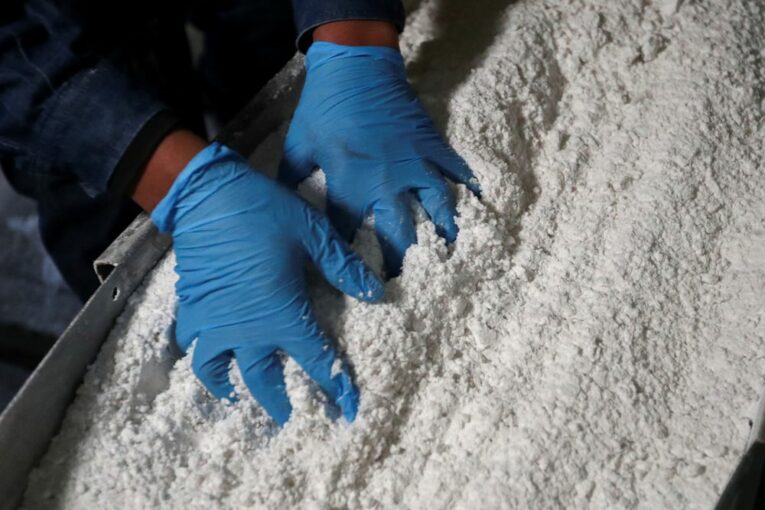
Less than a week after Vancouver-based Millennial Lithium Corp. asked shareholders to vote on a proposed all-cash buyout by China’s Ganfeng Lithium Corp., a second buyer has emerged and bid 6.1 per cent higher, offering $377 million in cash.
Millennial did not disclose the second buyer’s identity, but a source told the Financial Post it is Chinese battery maker Contemporary Amperex Technology Co., Limited, or CATL, as Bloomberg News reported.
The last-minute second suitor for Millennial — a company that is still developing a lithium brine project in the Argentinian desert — offers another sign that the lithium market has shaken off the doldrums of the past few years. The prices for battery grade lithium have surged dramatically since the start of the year, from around US$5,000 per tonne in December 2020 to around US$20,000 per tonne in September, according to pricing company Benchmark Mineral Intelligence.
“We’re seeing a lot of money flow in as prices pick up,” said George Miller, an analyst at Benchmark.
Miller said there’s been a “step change” in demand for lithium driven by rising electric vehicle sales. In August, more than 300,000 electric vehicles were sold in China, up from an average of around 200,000 per month during the previous year; in June, more than 200,000 electric vehicles were sold in Europe, more than double than the previous year.
By comparison, North America has lagged, averaging around 50,000 vehicles per month, he said.

But the low lithium prices of the past few years have stifled investment, Miller added. Prices for battery grade lithium crested in January 2018 at around US$25,500 per tonne, then essentially declined until December 2020.
Miller said his firm believes demand already exceeds lithium supply but that unused inventories should mitigate the impacts of any deficit at least until 2022.
Of the roughly 60 lithium exploration companies on the TSX Venture Exchange, Millennial has moved further along than many other companies, completing a definitive feasibility study in 2019 and setting up a pilot project for its brine pond project — a vast pool of chemicals that slowly evaporates over a period of years under intense desert sunlight, until an intermediate lithium that can be converted into battery material is left.
The company has identified 179,000 tonnes of proven lithium carbonate resources, and 4.1 million tonnes in the measured and indicated category; and it has not updated its resource estimates since 2019, according to its website.
Its stock has followed the general trajectory of the broader market, reaching a high of $4.62 per share in January 2018 then declining as low as 77 cents per share in mid 2019.
Last Friday, it had traded at $4.12 — more than the highest offer of $3.85 per share that it has received — but had dropped to $3.89 by Tuesday amid a Bloomberg News report that Ganfeng may wtihdraw rather than bid higher.
Farhad Abasov, chief executive officer of Millennial, declined to comment for this article. Emails seeking comment from CATL and Ganfeng, both based in China, were not returned by the time of publication.
Millennial is far from the only lithium explorer to experience investor excitement in recent months.
Ganfeng has been actively expanding, acquiring companies or stakes in companies, and negotiating many deals including Arena Mineral Inc., which is also developing a project in Argentina; Core Lithium Ltd., which is developing a mine in Mali; and Bacanora Lithium PLC, which is developing a project in Mexico — to name just a few of its deals.
Meanwhile, CATL has also been active, investing at least $13 million to maintain an eight per cent stake in Toronto-based Neo Lithium, which is also advancing a brine project in Argentina. Although Neo has only completed a pre-feasibility study, its market capitalization now exceeds $648 million.
Constantine Karayannopoulos, chairman of Neo Lithium, said things are suddenly exciting again, and valuations are rising across the sector.
“All a lithium exploitation company has to do is hang a ‘lithium this way’ sign on its door, and strategic buyers and investors will beat a path to it,” said Karayannopoulis.
Large miners, such as Rio Tinto Group, are looking at this space, while established players in the U.S., such as Albemarle are ramping up production. Automakers are also looking at investing in lithium projects with General Motors, Renault, Stellantis, Tesla and others inking deals to secure supply or starting negotiations to do so.
“I think a lot more guys have gotten funding straight through to development, even at early stages, because of these higher prices,” said Miller.
Financial Post
• Email: [email protected] | Twitter: GabeFriedz
_____________________________________________________________
If you liked this story, sign up for more in the FP Energy newsletter.
_____________________________________________________________
You can read more of the news on source
